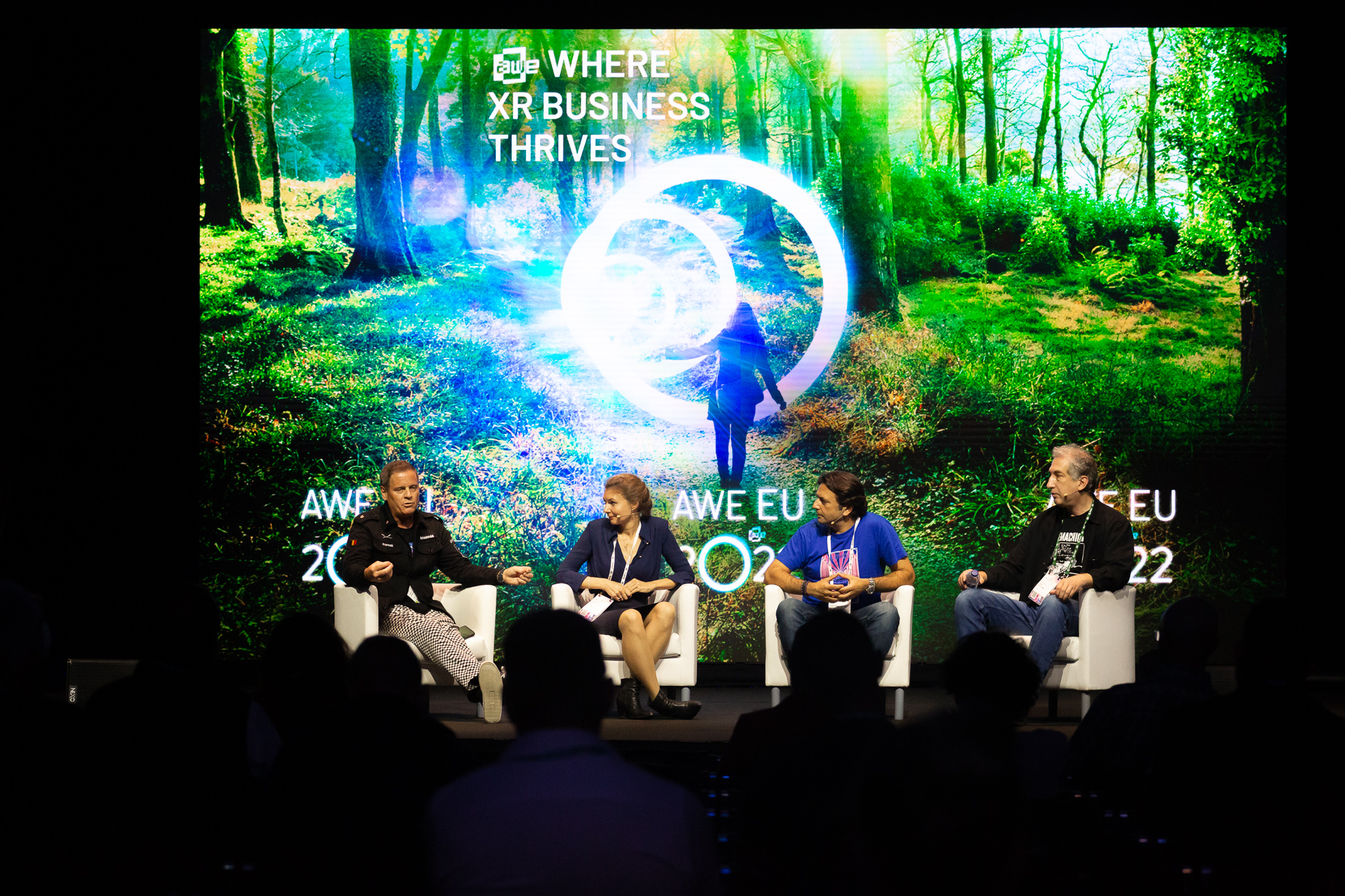Welcome back to AWE Talks, our series that revisits the most engaging content from AWE’s catalog of conference sessions. With a fresh batch of session footage from the recent AWE EU, there's plenty to dive into.
This week, we focus on the real-world metaverse. What is it and what will be the moving parts that need to be assembled? We hear from a panel of AR innovators about how these visions will materialize in the coming years.See the summarized takeaways below, along with the full session video. Stay tuned for more video highlights each week and check out the full library on awe.live and AWE’s YouTube Channel.
Speakers
Ali Hantal: Founder at XR Masters
Avi Bar-Zeev: Chief at RealityPrime
Dave Lorenzini: Director at Draw & Code
Katherina Ufnarovskaia: CEO at Augmented City
– Though the common metaverse vision is online 3D worlds, what about offline worlds?
– Specifically, a real-world metaverse could add digital depth to the physical world.
– Several companies are working towards this vision such as Google and Niantic.
– Why is now the right time? Several factors have converged in the spatial stack.
– AR creation platforms so far are great but most don't geo-anchor content persistently.
– That's where visual positioning systems (VPS) from Niantic and others can help.
– These systems use visual object recognition to localize devices and serve content.
– But then, there's a discoverability problem in that users have to hold their phones up.
– This could be solved when AR glasses become more ubiquitous, says Bar Zeev.
– However, there are several technical challenges to getting "walkable" AR glasses.
– When that hardware piece moves into place, the spatial stack will be primed.
– Elsewhere in the stack are other key elements, such as intelligent content delivery.
– This involves a sort of filtration system to serve users personalized relevant content.
– This is key, says Bar-Zeev, because we'll quickly go from content desert to jungle.
– This filtration system could be like a search engine in fetching the right content.
– Eventually, it should be automatic and ambient in serving preference-based content.
– But for that to happen, tech giants need to regain user trust with personalized data.
– Data collection sensitivities could be greater, given signs like location and biometrics.
– We could also see a "geo-browser" develop as the front end of the geospatial web.
– With that framework, people can access geo-anchored content, like websites today.
For more color, check out the full session below.
 Want more XR insights and multimedia? ARtillery Intelligence offers an indexed and searchable library of XR intelligence known as ARtillery Pro. See more here.
Want more XR insights and multimedia? ARtillery Intelligence offers an indexed and searchable library of XR intelligence known as ARtillery Pro. See more here. 


